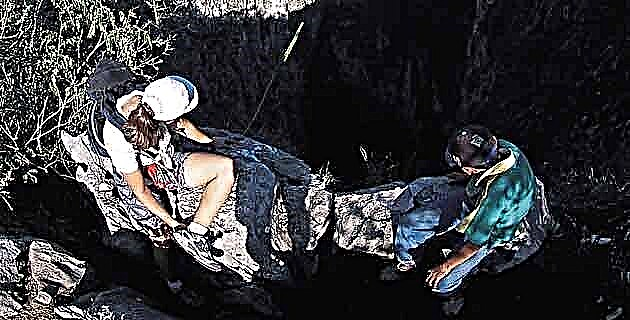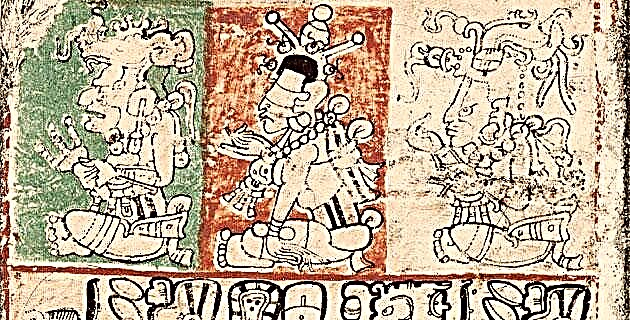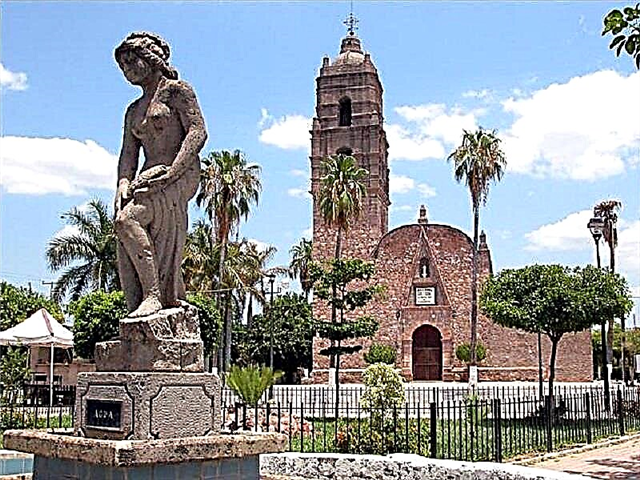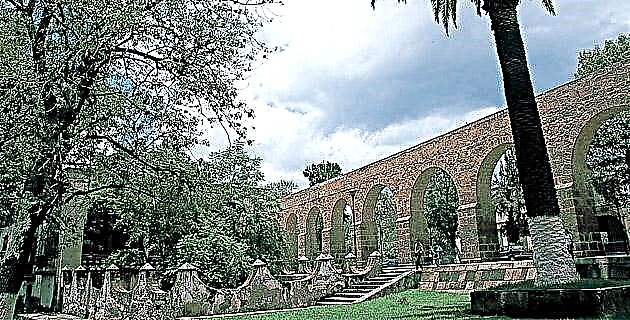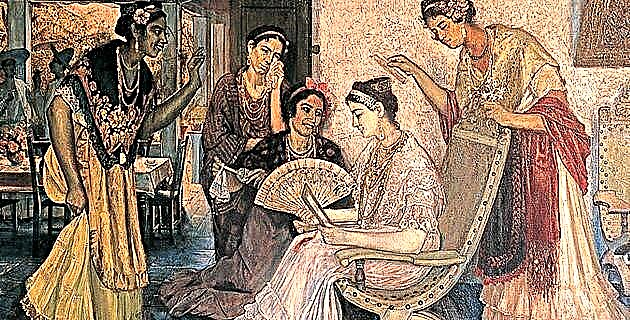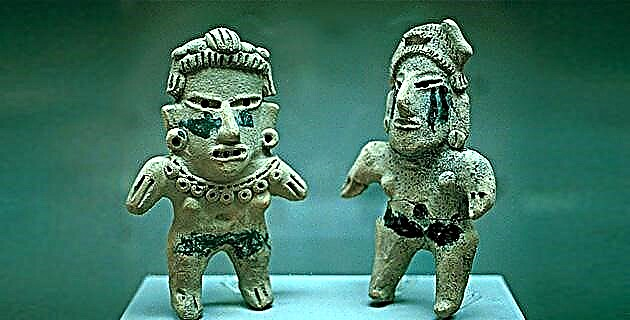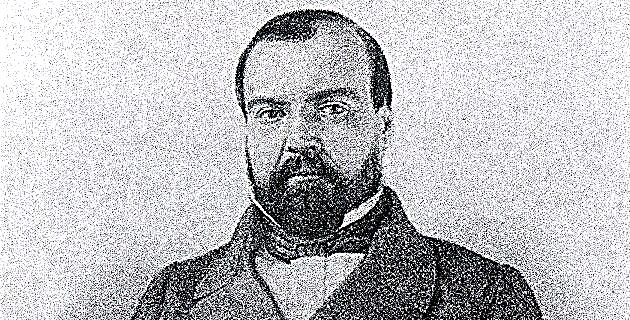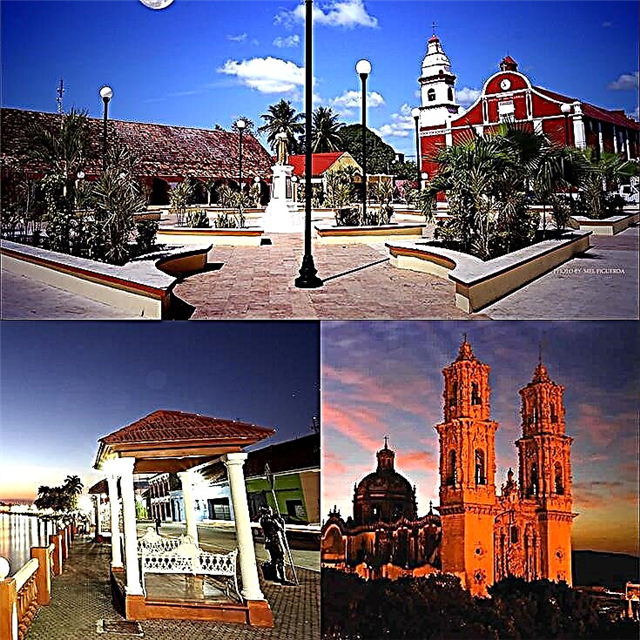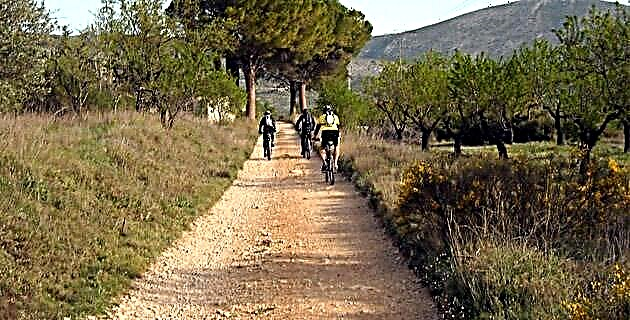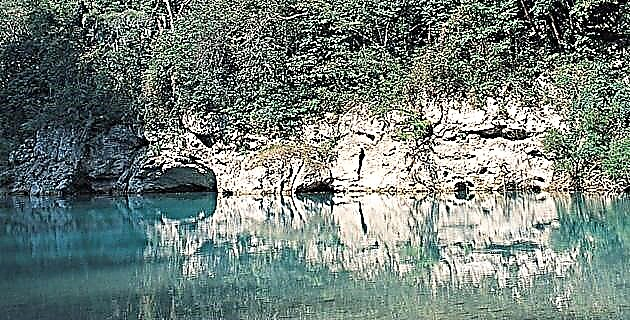
We sailed through the calm waters of the Tampaón River, along the pre-Hispanic route that led to the archaeological site of Tamtoc, to celebrate the first year that this magnificent city was opened to the public.
The day dawned just as we had predicted, a dense fog completely enveloped the Taninul hotel. We had arrived the night before and decided to spend the night here to be in greater contact with nature. At the agreed time, Alfredo Ortega, the Tourism Delegate of the Huasteca Zone, came to pick us up. The plan was to leave at seven in the morning to anticipate the heat of the day and enjoy the awakening of nature. We were about to start a test tour on the Tampaón River, following the old access route to the pre-Hispanic city of Tamtoc (place of water clouds), to establish times and distances of a next tourist route.
Rowing
Upon reaching the community of the Aserradero, the chosen embarkation point, we divided into two groups, leaving in the same canoes used for fishing and collecting sand. Although the idea is to acquire trajinera type boats to carry out the tourist routes, this time we would use these to measure the time of the journey by rowing. To avoid polluting the river and disturbing wildlife, the use of motor boats is prohibited. We did the first section of the trip in silence, enjoying the murmurs of nature and fascinated by the magic of the river covered by mist.
There are times when one must be quiet and this was one of them. We advanced slowly, as we were going against the current and looking for the shallowest points that would allow us to support the oars on the river bed and thus propel ourselves at a higher speed. The mist would not abate, which predicted that the heat of the day would be intense. Halfway through, the mist finally dispersed and then we could perfectly appreciate the landscape. Herons and zapapicos birds, papanes and tuliches, accompanied our trip.
With the clarity of the sun, we could observe the bottom of the river and a great variety of fish that rioted as we passed. In this river, the inhabitants of the riverbank usually fish for catfish, tilapa, prawn, snook, carp, mullet and fish. They also take advantage of the sandy mantle to extract sand.
After an hour and 40 minutes, we sighted our destination, what looked like a hill on the horizon, it was the largest structure of the archaeological site. To get to it from the jetty, we walked through a vast plain that revealed at every step the grandeur of the place.
A luxury host
In the palapa that gives access to the pre-Hispanic city, we were welcomed by archaeologist Guillermo Ahuja, director of the Tamtoc archaeological project, who told us that he is not only interested in rescuing the archaeological site, but also in the insertion of riverside communities in the provision of complementary services. Therefore, your interest in hearing our experience about the tour. He then gave us a detailed account of the site's rescue process, emphasizing the enormous value of the new finds. Excavation work formally began in 2001 (there were other partial excavations in 1960) and the archaeological site was opened to the public on May 11, 2006. It was in early 2005 that the lucky finds of two sculptures were unveiled. anthropomorphic with female representations, which would come to rethink the study of the cultures of Mesoamerica and confront some theories, such as the one that refers to the presence of the Olmec culture in the North of Mexico.
Feminine city
Tamtoc is a city of women, and not precisely because they ruled, but because of the strong female presence that can be seen in the archaeological site. Suffice it to mention that more than 87% of the remains found in the tombs of the place correspond to women. Similarly, of the five anthropomorphic representations in sculpture found so far in Tamtoc, only one has masculine attributes. This shows the important role that women played in the Huasteca culture.
This is how they show us a three-dimensional sculpture that is located in the center of the palapa, a piece that can be considered unique in its type –with reference to others found in Mesoamerica– because the representation in great detail of the body, back, spine, buttocks and the proportion of the hips, it bears a greater resemblance to the prototype of sculptures found in classical Greece, Rome or the Middle East.
The old City
Although the archaeological site is very extensive, only a small part has been explored. We first visit the three main squares, where you can clearly see in the larger structures, the circular finish on the sidewalks in the center of the stairs, characteristics of Huasteca architecture.
The structures are oriented towards different celestial bodies or constellations, since those who inhabited this city had a great knowledge of astronomy and consequently, of agricultural cycles. Proof of this is the solar marker found in one of the squares. During the last days of April and the first days of May, the sun reproduces the phenomenon of projecting the shadow of a stele on the center of the staircase, which it represented at that time, the beginning of the agricultural year.
Before reaching the main stela, we visited “Tomás, el cinco caracol”, as the archaeologists of the site affectionately call him. It is the only male anthropomorphic sculpture in Tamtoc, because although only the lower part has been recovered, it shows a huge penis pierced as a self-sacrifice, very similar to the representation of the myth of the creation of man, where Quetzalcóatl, going down to the underworld, pierces the limb to mix it with the bones of previous generations and thus conceive man.
The stone of time
By the end of the tour they had another surprise in store for us. It was a monolith over 7 meters long by 4 meters high, discovered by chance in February 2005, when structures were being released from the site's old hydraulic channel. It was then that fragments of flagstone were found protruding on the surface of the ground. When they began to clean, they noticed that the slab continued inwards, reaching a depth of more than 4 meters. The find turned out to be one of the most fortunate and important that have been made about this culture. It is a fragmented monolith where three women are represented, two of whom appear beheaded. The other character has a gaunt face, which can be interpreted as an allusion to the earth, although it is also related to this sculpture, with water and fertility. Likewise, many references to the moon have been found in this monolith - in addition to the orientation - which made us think in the first instance that it was a lunar calendar. However, when finding elements that allude to the sun and give a guideline to also understand the solar calendar, it has been baptized as the Tamtoc Calendar Stone.
Back to the river
Before returning to the Sawmill again, we took the opportunity to visit Tampacoy, one of the tenek communities included in the riverside circuit. This place will be a stopover on the way to the archaeological site, where you can directly meet an indigenous tenek community, eat, buy crafts or spend the night. With the sun already blazing, we began our return to the Sawmill, but this time we had the advantage of taking the current in our favor. Therefore, our travel time was one hour and our rowers-guides had a more relaxed rafting.
Here our adventure ended, but a table set at our guide's house was still waiting for us. Together with his family, in the freshness of his hut, we shared a meal that tasted like glory. We were satisfied to have reopened the old road to Tamtoc.
Imagine arriving in this mysterious city enveloped by the mist of the legendary Tampaón River… an experience you will never forget.
Tenek culture
They are an indigenous group of Mayan origin. During pre-Hispanic times they had an early cultural development, compared to other groups in Mesoamerica. The mounds or round platforms made of clay and stone, on which the temples were raised, are characteristic of pre-Hispanic Huasteca architecture.
In addition to being fierce warriors, they were distinguished by their magnificent sandstone rock sculptures, carved or in bas-relief. One of the most beautiful known examples of this work –in addition to the sculptures found in Tamtoc– is the Huasteco Adolescent. At present, many traditions of this culture remain alive, such as the celebration of xanthan, in honor of the deceased.
There is a one-of-a-kind piece that bears the greatest resemblance to the prototype of sculptures found in classical Greece, Rome or the Middle East.
The structures are oriented towards different celestial bodies or constellations.

